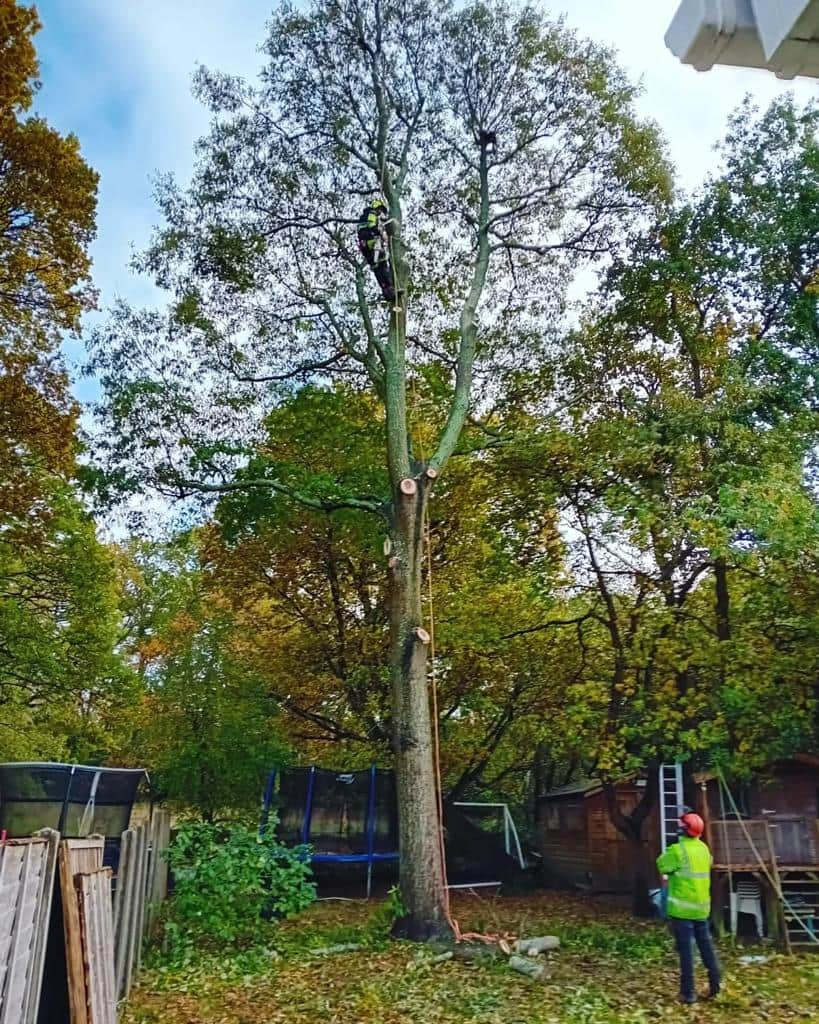Tree surgery is a critical service that ensures the safety and health of trees while protecting properties and people from potential hazards. Without regular maintenance, trees can become weak, diseased, or structurally unstable, increasing the risk of unexpected falls, especially during storms or high winds.
At NS Tree Surgery Witley, we specialise in professional tree care, helping homeowners and businesses in Witley, Surrey, manage their trees safely and effectively.
How Trees Become Dangerous Over Time
1. Weak or Diseased Branches
Trees suffering from disease, pests, or decay often develop weak branches that can break unexpectedly. These branches pose a significant risk to people, vehicles, and structures nearby.
2. Root Decay and Instability
Tree roots anchor trees to the ground, but they can weaken due to fungal infections, poor soil conditions, or root damage from construction work. A tree with compromised roots is more likely to topple over in extreme weather.
3. Storm and Weather Damage
High winds, heavy rain, and snowfall can put immense pressure on trees, causing them to break or fall. Trees that are not regularly pruned are more susceptible to storm damage.
4. Overgrown or Leaning Trees
Trees that have grown too tall or have an unnatural lean may have structural weaknesses that make them prone to collapse. Pruning and crown reduction can help restore balance and reduce risk.
The Role of Tree Surgery in Preventing Falls
5. Tree Inspections and Risk Assessments
Professional tree surgeons assess trees for signs of weakness, disease, or structural instability. Early identification of these issues can prevent accidents before they happen.
6. Pruning and Crown Reduction
Regular pruning removes dead or weak branches, reducing the risk of them falling unexpectedly. Crown reduction helps to manage the tree’s weight distribution, making it more stable.
7. Tree Bracing and Cabling
For trees that show signs of instability but do not need to be removed, bracing and cabling can provide extra support, helping to prevent breakages during strong winds.
8. Safe Tree Removal
When a tree is beyond saving or poses a severe risk, professional removal is the safest option. Removing a dangerous tree requires expert handling to avoid damage to nearby structures.
Signs That a Tree May Be at Risk of Falling
9. Visible Cracks or Splits
Deep cracks in the trunk or large branches may indicate structural weaknesses that could lead to failure.
10. Fungal Growth at the Base
Fungi, such as mushrooms growing around the roots, can be a sign of decay within the tree, weakening its stability.
11. Sudden Leaning
A tree that starts to lean unexpectedly could have suffered root damage, making it more likely to collapse.
12. Hollow or Decaying Trunk
A hollow trunk reduces the strength of a tree, making it vulnerable to high winds or heavy snowfall.
The Importance of Professional Tree Surgery
13. Reducing Liability and Property Damage
A falling tree can cause extensive property damage or personal injury. Regular tree maintenance helps reduce the risk of liability claims.
14. Maintaining Healthy Growth
Tree surgery not only prevents hazards but also encourages strong and healthy growth, ensuring trees remain a valuable feature in gardens and landscapes.
15. Compliance with Local Regulations
In some cases, tree work requires council permission. Professional tree surgeons ensure that all work complies with local regulations and conservation laws.
Conclusion
Tree surgery is essential for preventing dangerous tree falls and ensuring that trees remain safe and healthy. Regular inspections, pruning, and maintenance help to reduce risks while enhancing the longevity of trees.
At NS Tree Surgery Witley, we provide expert tree care services across Witley, Surrey. If you have concerns about a tree on your property, contact us for professional advice and maintenance to keep your surroundings safe.
Call us on: 01483 967 989
Click here to find out more about NS Tree Surgery Witley
Click here to complete our contact form and see how we can help with your tree’s needs.

